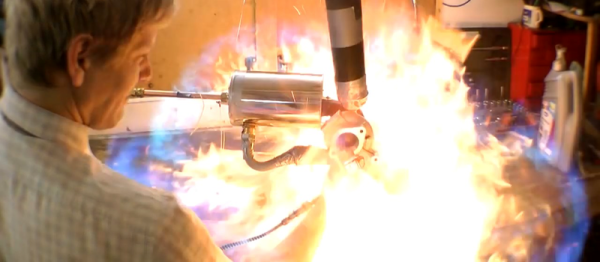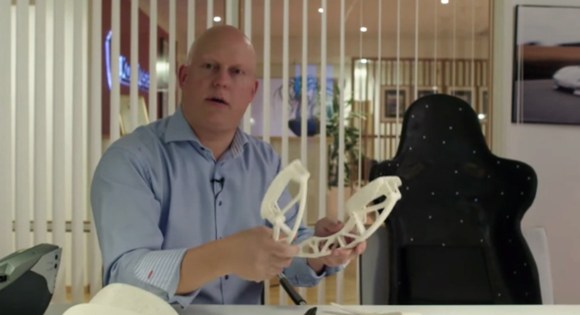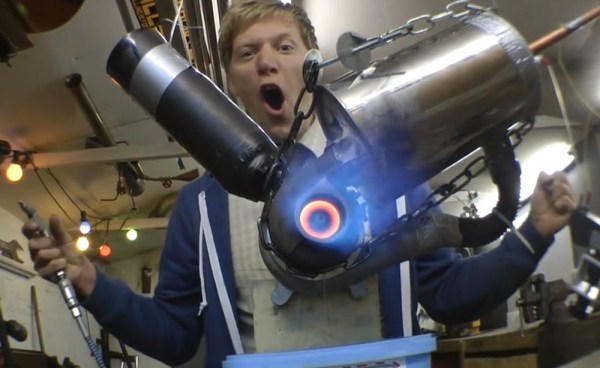Consider this a public service announcement. [Colin Furze], besides being a raging lunatic, seems to have the nine lives of a cat. Well, he’s not always so lucky, and now that we’ve recovered from being grossed out by the results, we’re glad that [Colin] posted this “fail” video.
Basically, he’s firing up one of his jet engines, and there’s a big fireball. He wasn’t wearing any protective clothing. This is hardly a spoiler — please don’t watch the video below if you’re grossed out by people visiting the doctor’s office to get their horrible second degree burns all up and down their forearm treated. You’ve probably learned the lesson already just by looking at the preview image.
Naturally, we’ve covered [Colin]’s videos before. He’s either very lucky or a little bit more careful than he lets on. We’ve seen him play with fire and not get burned, and stick a jet engine on a go-kart. We’re not gonna tell you what to do, but if that were us, we’d be wearing at least long sleeves and a helmet.
















